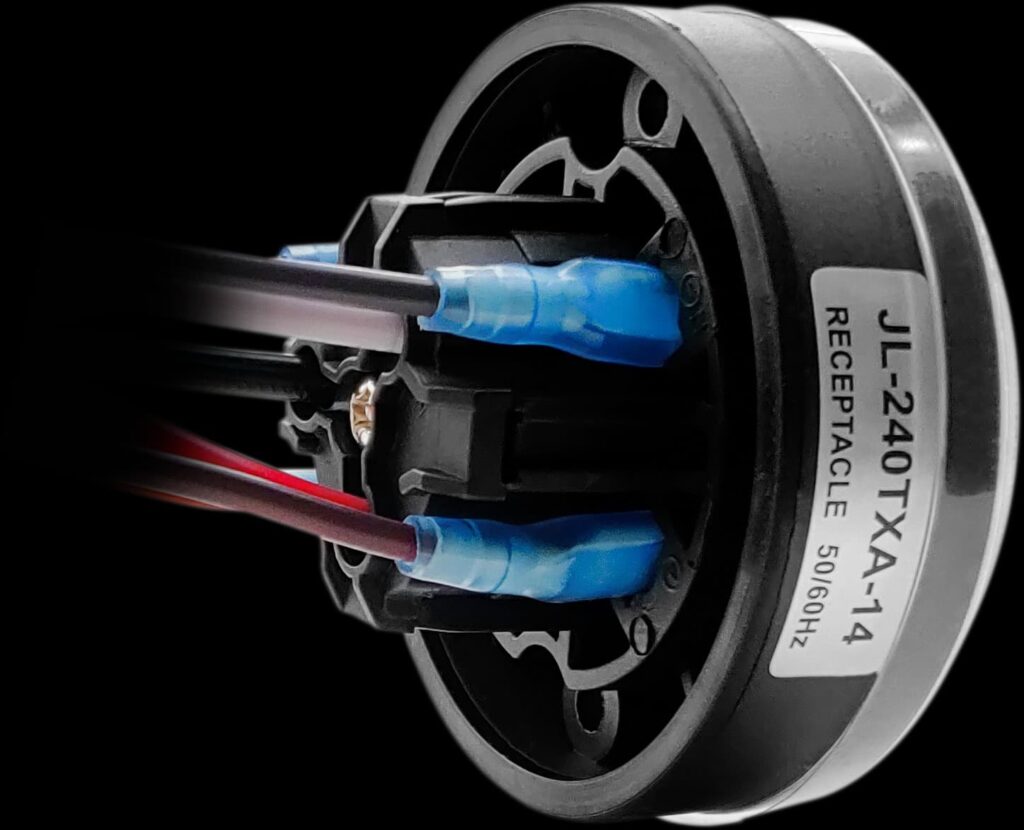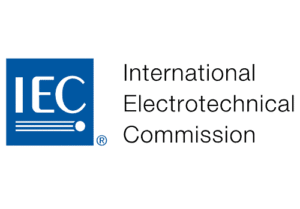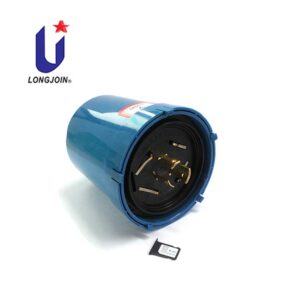Soquetes de fotocélula JL-240X/TX: Compreendendo a diferença entre juntas separadas e integradas
Introduzir
Os sistemas de iluminação externa permanecem ao ar livre. Eles enfrentam muitos desafios climáticos. A vedação em um soquete de fotocélula frequentemente é ignorada. No entanto, seu design é essencial para uma vida útil longa e desempenho superior. Você pode trabalhar com sistemas de iluminação pública com fotocélula ou planejar projetos de iluminação urbana. Saber como as juntas funcionam pode fazer uma grande diferença.
Este guia detalha os dois estilos populares de juntas usados no JL-240X da Long-join e JL-240TX Soquetes para fotocélulas. Cada design de vedação possui seu próprio estilo de vedação. Isso torna alguns designs melhores ou piores para uso externo. Você quer uma iluminação pública que dure mais, funcione melhor e permaneça vedada contra as intempéries? Continue lendo abaixo.


O que é um projeto de junta separada e por que isso é importante?
Ao escolher uma tomada de controle para fotocélula, você geralmente pensa primeiro na voltagem. Você também verifica os conectores e se eles encaixam. Mas a junta é a heroína desconhecida, especialmente em ambientes de instalação diversos.
Um projeto de junta separada refere-se a uma estrutura onde o elemento de vedação não é moldado como parte do corpo do soquete. JL-240X tomada de fotocélula, isso significa que a junta é removível e pode ser adaptada com base na superfície de montagem.
Este design permite flexibilidade na instalação. Uma junta rígida pode não se encaixar perfeitamente. Isso deixa espaços por onde a água pode infiltrar ou a poeira pode se acumular. Ao separar a junta, você obtém a vantagem da vedação adaptável.
Recurso | JL-240X (Junta Separada) |
Tipo de junta | Removível |
Flexibilidade de instalação | Alto |
Manutenção | Fácil de substituir ou atualizar |
Caso de uso ideal | Postes de materiais mistos, ambientes urbanos |
O que é um projeto de junta integrada e quando ele é melhor?
Em algumas configurações de iluminação externa, você não pode correr riscos com a vedação. É aí que entram os projetos de vedação integrada.
O design de junta integrada significa que a junta de vedação é embutida diretamente no corpo do soquete. O soquete com fotocélula JL-240TX utiliza esse método, garantindo uma vedação consistente e confiável sem a necessidade de personalização da junta durante a instalação.
Este design é perfeito para locais com umidade, maresia ou clima rigoroso no dia a dia. juntas embutidas Reduz erros de instalação e chances de vedações ruins. Isso torna o design ideal para ambientes costeiros e úmidos.
Recurso | JL-240TX (Junta Integrada) |
Tipo de junta | Construído em |
Resistência à água | Muito alto |
Melhor ambiente de uso | Zonas costeiras, tropicais e de alta umidade |
Manutenção | Mínimo |
Qual deles oferece melhor impermeabilização?
Ninguém quer lidar com uma falha prematura na iluminação, especialmente quando causada por água ou poeira que entra no soquete. Mas como esses dois tipos de vedação se comparam em termos de impermeabilização?
Quando se trata de iluminação externa, o desempenho da vedação é crucial. A infiltração de umidade pode levar à falha do fotossensor, corrosão ou curto-circuito. Entre os dois designs, o JL-240TX com vedação integrada geralmente oferece melhor impermeabilização.
Por quê? Porque seu design minimiza o erro humano durante a instalação. Não há necessidade de alinhar ou encaixar manualmente uma junta — ela já está no lugar. Isso proporciona melhor IP65- vedação de nível, crucial em sistemas de controle de fotocélulas usados em áreas propensas à chuva.
Dito isso, o JL-240X ainda oferece excelente proteção se a junta correta for usada. Sua flexibilidade é valiosa em regiões secas ou levemente úmidas, onde a vedação não é constantemente testada pelas condições climáticas.
Modelo | Nível de impermeabilização | Melhor para |
JL-240X | Moderado–Alto | Materiais de postes flexíveis |
JL-240TX | Alto | Climas severos, úmidos ou com muito sal |
Se a impermeabilização for sua principal prioridade, opte por uma integrada. Mas, em termos de adaptabilidade, a junta separada ainda se destaca.
Por que o JL-240X é ideal para iluminação de ruas e parques urbanos?
estruturas compostas, o design dos sistemas de iluminação varia muito. Isso torna vedação universal resistente — a menos que seu soquete tenha a flexibilidade de junta correta.
Em ambientes urbanos, postes de iluminação vêm em todos os formatos e materiais — postes de aço, concreto decorativo e até mesmo compósitos modernos. Essa diversidade exige flexibilidade de instalação, e é aí que o soquete para sensor de iluminação com fotocélula JL-240X se destaca.
Você pode escolher ou trocar a junta para se adaptar a diferentes superfícies de poste, garantindo um encaixe perfeito e uma vedação eficaz em todas as ocasiões. As equipes de manutenção adoram isso porque podem substituir apenas a junta sem trocar o soquete inteiro.
Necessidades de Iluminação Urbana | Vantagem JL-240X |
Materiais de postes variados | A junta substituível adapta-se facilmente |
Projetos de Retrofit | Compatível com a infraestrutura existente |
Manutenção de longo prazo | Menor custo devido à substituição de peças |
O que torna o JL-240TX melhor em áreas costeiras ou úmidas?
Se você já trabalhou em regiões costeiras ou em climas tropicais, sabe o quão destrutivos podem ser os ciclos de corrosão salina, umidade e calor. Luminárias que funcionam muito bem na cidade muitas vezes falham sem aviso prévio.
Sal, umidade e oscilações de temperatura são um pesadelo para sensor fotoelétrico sistemas. O JL-240TX resolve esse problema com um design robusto e único que veda elementos corrosivos.
Em locais onde a maresia ou as estações chuvosas são comuns, este modelo oferece um controle de iluminação confiável e sem preocupações. Após a instalação, você não precisará se preocupar com corrosão ou falhas causadas pela umidade que penetra na vedação.
Desafio Costeiro | Solução JL-240TX |
Spray de sal | A junta não removível reduz a exposição |
Umidade | A vedação de uma peça evita a condensação |
Mudanças frequentes de temperatura | Mantém condições internas estáveis |
O que você deve considerar ao escolher entre esses dois?
Escolher o soquete de fotocélula certo não se resume apenas às especificações. Trata-se de condições reais. De que material é feito o poste? O clima é imprevisível? A manutenção será fácil ou difícil?
A escolha entre juntas separadas e integradas depende da localização, das condições ambientais e das necessidades de manutenção.
- Use o JL-240X se sua infraestrutura de iluminação variar e você precisar de uma solução personalizável.
- Escolha o JL-240TX se você estiver lidando com maresia, tempestades ou quiser uma solução do tipo "plug and esqueça".
Ambos os modelos são projetados pelos principais fabricantes de fotocélulas, como a Long-join, e são compatíveis com Soquetes NEMA e sistemas de controle de fotos.
Conclusão
Compreender o projeto da junta não é apenas um detalhe técnico - é um ponto de decisão fundamental para garantir iluminação pública externa Desempenho. Seja a eficácia da vedação ou a adaptabilidade da instalação a sua prioridade, a Long-join oferece soquetes de fotocélulas projetados para desafios ambientais específicos.
Explore nossa gama completa de soluções de sensores de iluminação fotocélula sobre Junção longae selecione o soquete que melhor se adapta às necessidades do seu projeto.
Links externos:
- https://en.wikipedia.org/wiki/Gasket
- https://en.wikipedia.org/wiki/Sealing
- https://en.wikipedia.org/wiki/Photoelectric_sensor






